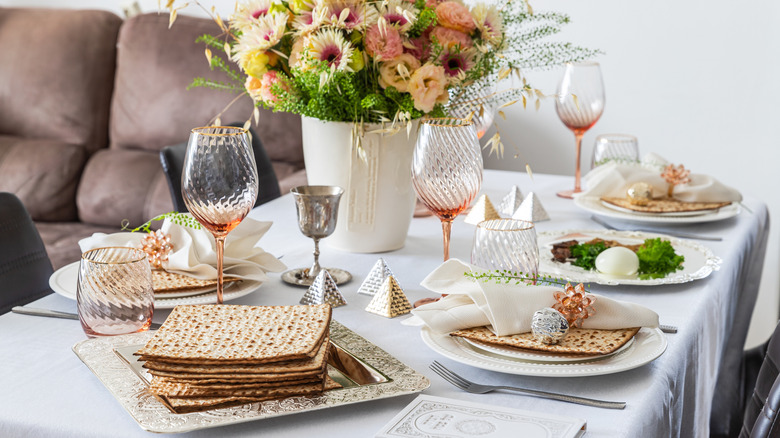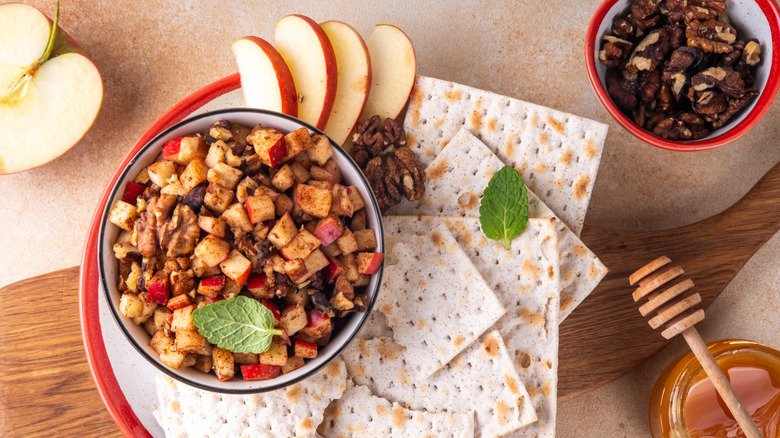What Does A Typical Passover Dinner Menu Look Like?
Passover is a Jewish holiday that marks the anniversary of the Jewish Exodus from Egypt over 3,000 years ago. The holiday is always observed in the spring, lasts for seven to eight days, and begins after dark on the first night with the Passover meal, or Seder, a 15-step dinner timed around stories of the Exodus. Every component of Seder, from the menu to the stories, sounds, and even the posture you take while you eat is a symbolic part of the tradition.
The first part of a typical Passover dinner menu is largely ceremonial, consisting of wine and six different foods arranged on a center platter called a ka'arah, or Seder plate. Each of the foods on the Seder plate have significance. The cracker-like matzah, bitter herbs (here's more on the meaning of bitter herbs), charoset paste and karpas vegetable are meant to bring your thoughts to the days of Jewish slavery. A shankbone known as the zeroa, and a hard-boiled egg known as the beitzah represent different sacrifices and offerings brought to the Holy Temple.
After the more structured part of Seder is complete, the menu loosens up a bit and can vary depending on your host. Everything on the table will be kosher and you likely won't see a lot of grains, legumes, or beans, according to some traditions. But you will see a wide variety of roasted vegetables, meats, and other flavorful dishes.
Common dishes served after Seder during Passover Dinner
There are a few dietary restrictions on Passover, depending on the tradition being observed. Some people avoid kitniyot — a group of foods consisting of things like legumes, corn, sesame seeds and mustard. But, there's always plenty of roasted meat, usually a classic matzo ball soup, and flourless chocolate cake.
As appetizers and served between the Seder and Passover Dinner, you'll start with Gefilte fish — mashed fish balls that are cooked with matzo meal and served with horseradish. You'll probably also find an assortment of roasted potatoes and radishes, Passover rolls, tabouli, and nut stuffed figs. Typically, there will be a brisket served at Passover in some form (here's how to choose a perfect brisket), usually red wine-braised with plenty of sauteed onions, roasted carrots, and other root vegetables.
Sweets aren't off the table at Passover, in fact there are several ways to wrap up dinner with at treat. Flourless chocolate cake, macaroons, fruit salad, sorbet, Passover popovers, and apple pie are all options for a Passover dessert menu that wraps up a ceremonial and celebratory evening of food and stories.

